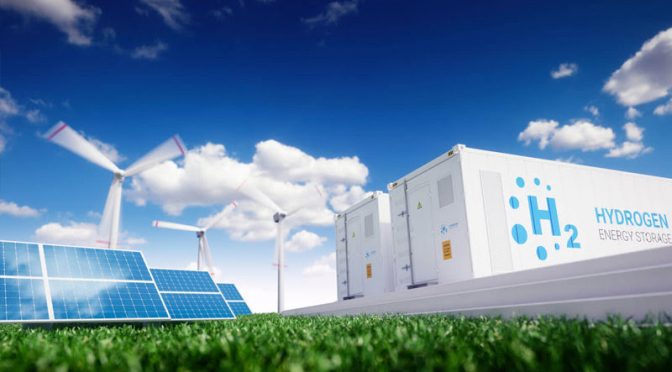Hydrogen will be the fuel of the future and step by step will replace all current fossil fuels. In AleaSoft an analysis of the impact of hydrogen on the energy sector has been carried out as a key factor in the ecological transition and a summary of the present and future use of this gas in various sectors of the economy.
Hydrogen is the most abundant element in the universe. It is used as an input in oil refining, the production of ammonia and methanol and the manufacture of steel. Current global demand for hydrogen is more than 70 million tons per year.
The supply of hydrogen to industrial users is now an important business worldwide. The demand for hydrogen, which has multiplied by more than three since 1975, continues to increase, supplied almost entirely by fossil fuels, with 6% of global natural gas and 2% of global coal destined for the production of hydrogen.
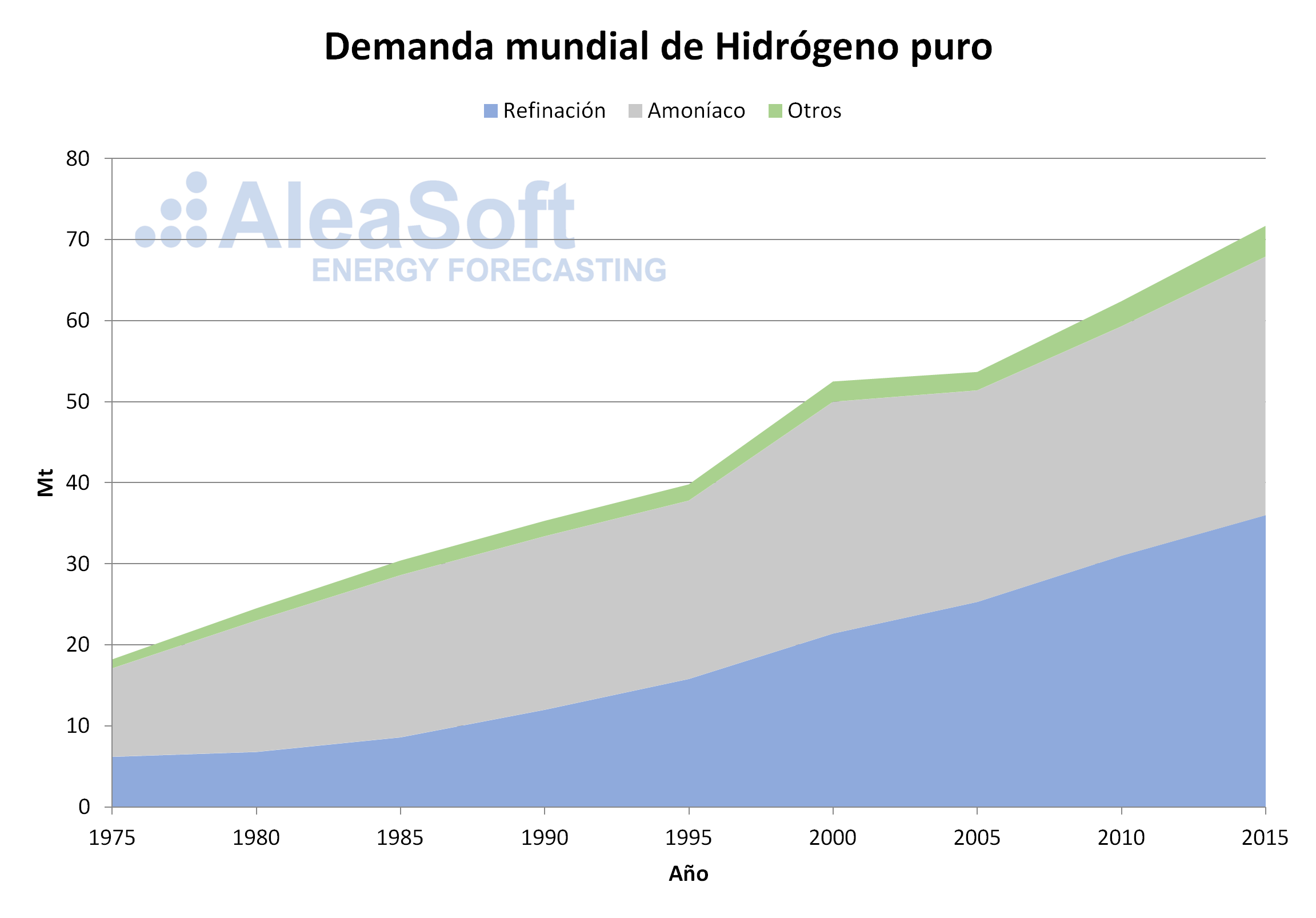
The number of countries with policies that directly support investment in hydrogen technologies is increasing, along with the number of sectors they are targeting. There are about 50 objectives, mandates and incentives of policies in force today that directly support hydrogen, most of them focused on the transport sector.
Hydrogen production
Almost all of the current hydrogen is produced from hydrocarbons such as natural gas and coal. As a consequence, hydrogen production is responsible for the emission of around 830 million tons of carbon dioxide per year, equivalent to the combined CO2 emissions of the United Kingdom and France.
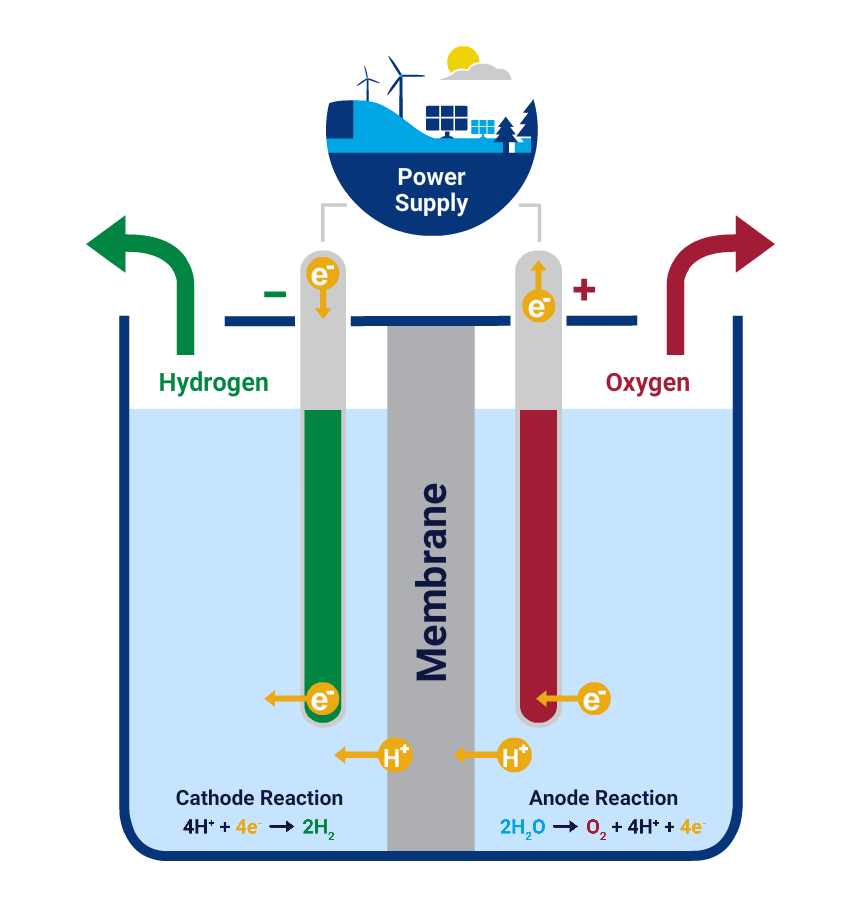
However, there is a non-polluting alternative, the so-called green hydrogen. It is the hydrogen obtained through the electrolysis of water. Electricity is required for this process, so if the generation of a renewable source is used, hydrogen will be obtained without emissions in the process.
With the decrease in the costs of renewable electricity, in particular photovoltaic and wind power, interest in green hydrogen is growing and several demonstration projects have been carried out in recent years. However, the challenge is not small. Migrating all current hydrogen production would represent an electricity demand of 3600 TWh, more than the annual electricity generation of the entire European Union.
The construction of electrolysers in locations with good conditions of renewable resources could become a low cost supply option for hydrogen, even after taking into account the transmission and distribution costs of hydrogen transport from renewable locations, often remote, to the end users.
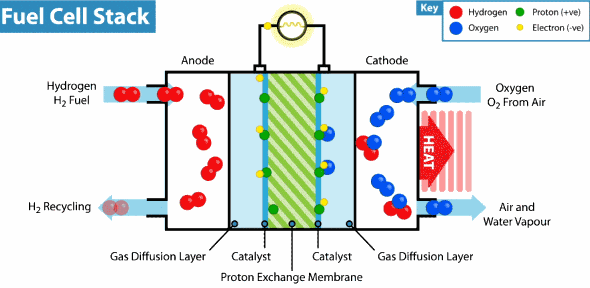
Hydrogen electricity production
In order to obtain electricity from hydrogen, the inverse reaction is precisely carried out than to obtain hydrogen. In this case, it reacts with oxygen, obtaining electricity and water. The device responsible for carrying out this reaction is called a fuel cell. One of the first practical applications of fuel cells was in space vehicles, where in addition to the power supply, the resulting water can be used by astronauts to drink, or to cool the ship’s systems
In this way, the generation of electricity with fuel cells from hydrogen is 100% clean, and also as a byproduct, drinking water is generated.
Hydrogen in renewable energy management
One of the main limitations of renewable energy sources is that their generation depends on meteorological variables that have an unmanageable behavior. Wind generation depends on the intensity of the wind in the locations of the parks, which is a variable of great randomness. Photovoltaic generation depends on solar radiation profiles. This leads to these sources of energy cannot guarantee a certain production at a certain time, but will alternate periods of high and low production depending on the weather conditions of each moment.
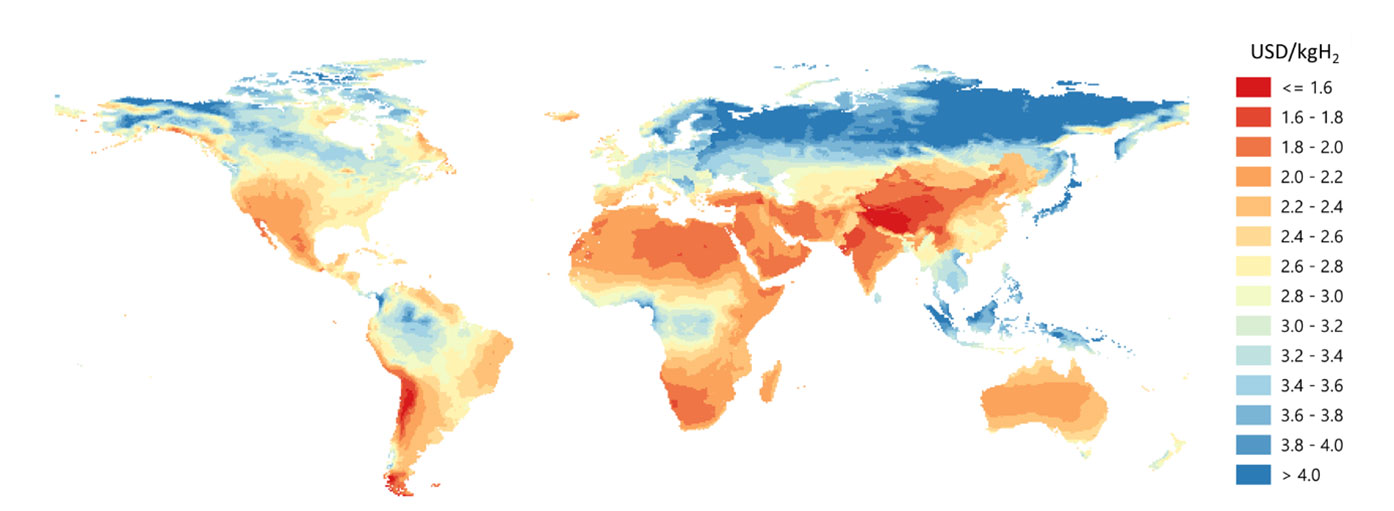
Cost of hydrogen created with photovoltaic and wind energy Source: IEA
One way to make better use of high-generation electricity peaks from these renewable sources is to use the surplus to produce hydrogen. Then, the hydrogen produced could be sold directly or used to generate electricity at a time when the production of the renewable source is scarce.
It is in this sense that the generation of hydrogen would represent the regulatory element of the equilibrium in the price of the electricity market. In a scenario of much renewable production, whether wind, photovoltaic or other source, the minimum market price would be marked by the value from which it would be more profitable to use electricity to produce hydrogen. A drop in price would imply the mass production of hydrogen, which would represent an increase in demand and finally a market equilibrium would be reached.
Hydrogen as a form of energy storage
Energy storage is one of the main challenges that the sector will face in the coming years. Battery technologies have evolved a lot, but the issue of long-term storage doesn’t solve it yet. It is this scenario where hydrogen could be very useful. Not only because of its ability to store energy for long periods of time, but also because it will be much easier to handle, since its weight will be lower, because the energy density of compressed hydrogen tanks is higher than those of batteries lithium-ion.

Hydrogen in the transport sector
The transport sector is probably the area where hydrogen can be imposed more effectively. Hydrogen fuel cell (FCEV) electric cars would reduce local air pollution because, like electric battery cars (BEV), they have zero emissions of polluting gases.
There are already cars on the market that use this technology and have similar and even superior performance to several battery-powered cars. The aspect in which the hydrogen car will have no competition is in refueling. Replenishing a hydrogen car is much faster than recharging a car to batteries.
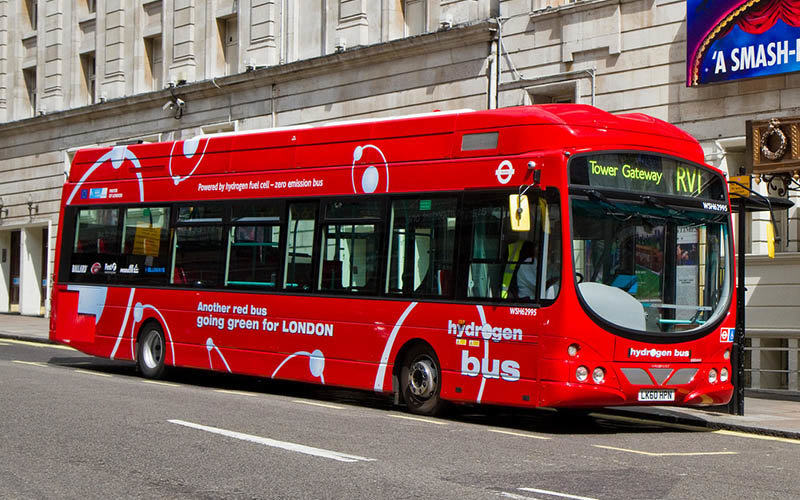
But the field of action of hydrogen is not summed up to cars. In larger vehicles such as buses or even in airplanes, the electric alternative with batteries is often discarded because of the weight involved in the batteries. Hydrogen represents a much lighter way of transporting the ability to power an electric motor. In June 2019, the European companies that make up the H2Bus Consortium joined together with the objective of working together to deploy a fleet of 1000 electric fuel cell buses that will be incorporated into the fleets of several European transport managers. In addition, they will install, in each of the European cities where they operate, the hydrogen recharge infrastructure necessary to make them commercially competitive.
Hydrogen can also be converted into hydrogen-based fuels, including synthetic methane, methanol, ammonia and synthetic liquid fuels, which have a range of potential transportation uses.
The hydrogen revolution
Green hydrogen is the fuel of the future. The ability to use a fuel with a zero CO2 footprint represents a revolution in the energy and transportation sector. Gasoline, gas, coal and all other fuels will be gradually displaced by hydrogen. From industrial to domestic use, the way forward is the use of hydrogen as the main fuel. In addition, as already mentioned, it will ultimately be the regulatory element of the balance of the electricity market.
